Best audio interfaces under $200/£200 2025: Make high-quality recordings that won't break the bank
Our pick of sub-$/£200 audio interfaces from Focusrite, Audient, Arturia and more
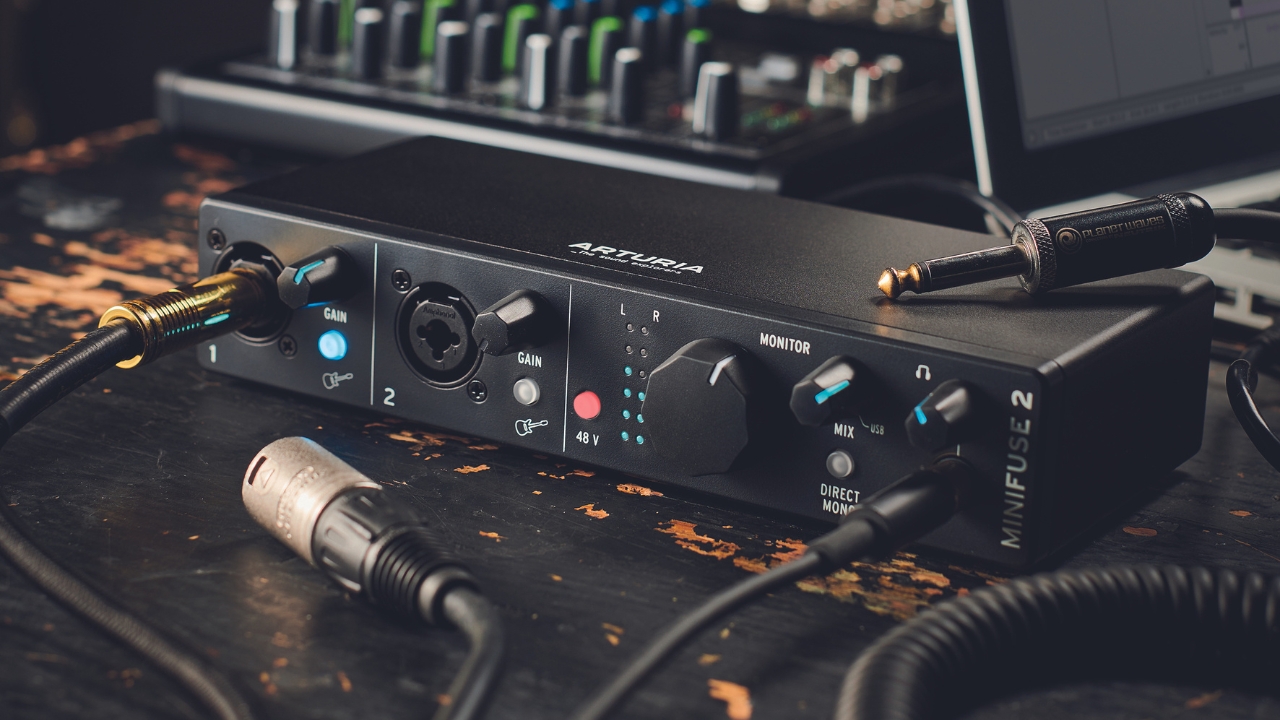
1. The quick list
2. Best overall
3. Best budget
4. Best compact
5. Best for guitar
6. Best for streaming
7. Best for podcast
8. More options...
9. Buying advice
10. How we test
Audio interfaces have been getting steadily cheaper over the last few years, making it more accessible than ever musicians and creatives of all kinds to get their hands on great quality preamps for less. With the best audio interfaces under $200/£200, far from being limited, you can have you pick from big names like Focusrite, Audient, Universal Audio, and many more.
Every single interface in this guide has been tested by one of our writing team and we've covered the gamut from super cheap interfaces to those that will max out your budget. When we test audio interfaces we use them as you would, integrating them into our home studio setups, using them to record a variety of instruments, and taking them on the road for mobile recording sessions. This stringent testing method ensures we only recommend the very best of the best, and allows us to get a fantastic overview of what the perfect interface for a particular use case is.
All of these interfaces will do a great job at the very basic task of capturing audio, some will be better than others at particular tasks so we've listed them via use case to make it easier for you to select your perfect match. If you're unsure of anything then have a look at our buying advice section which has loads of common questions answered by the experts here at MusicRadar.
The quick list
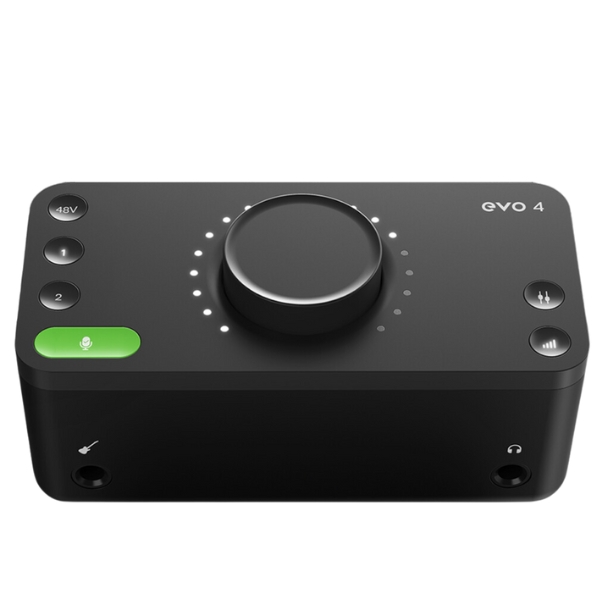
The Audient Evo 4 is a smart and compact audio interface and is our top choice if your budget is under $200, giving you great quality preamps and plenty of functionality.
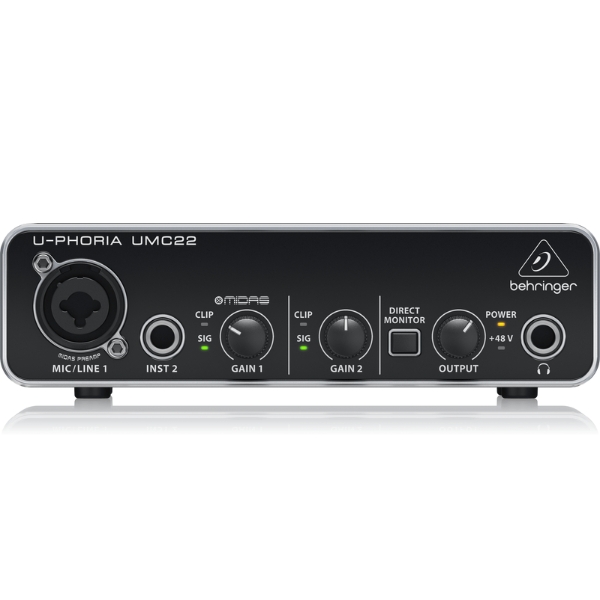
If you're on a budget, it doesn't come much cheaper than the Behringer UMC22. Priced well below the $/£100 mark, it works brilliantly for home recording, demos, and songwriting tasks.
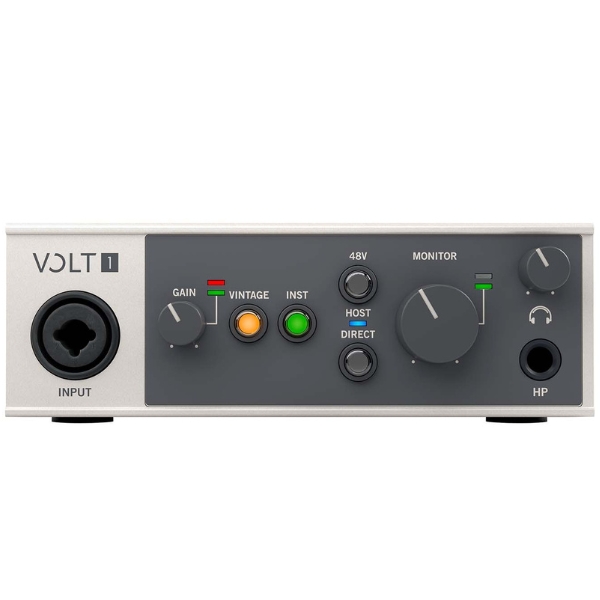
Despite being relatively cheap and small, the Universal Audio Volt 1 comes in a rugged metal case, and features emulated tube preamp circuitry for juicing up your direct signals.
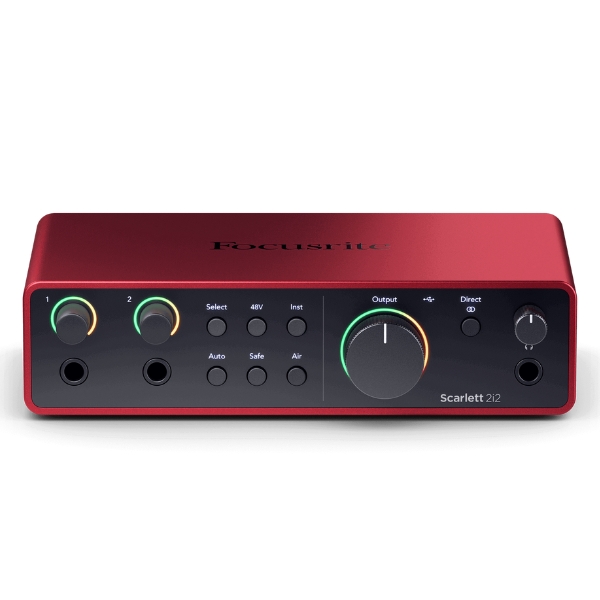
A brilliant interface for any task, we particularly love the Focusrite Scarlett 2i2 4th Gen for recording guitars thanks to its clean preamps and the air, clip safe, and auto gain functionality.
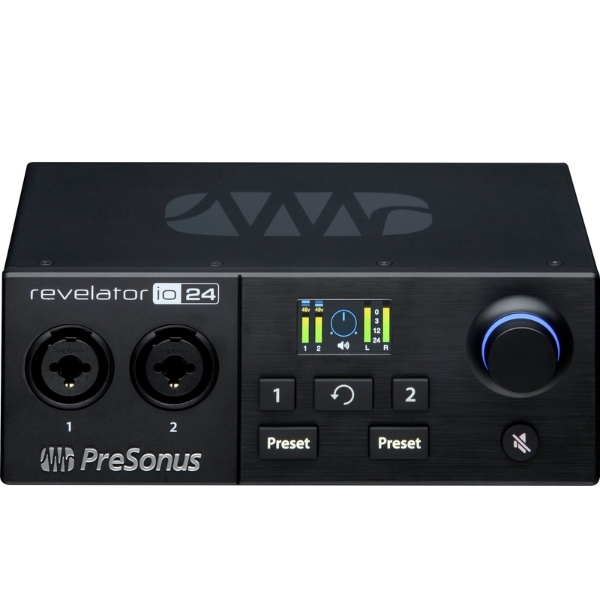
With its powerful Universal Control software that features loopback, the PreSonus Revelator io24 is a great option for those looking to use an audio interface for streaming.
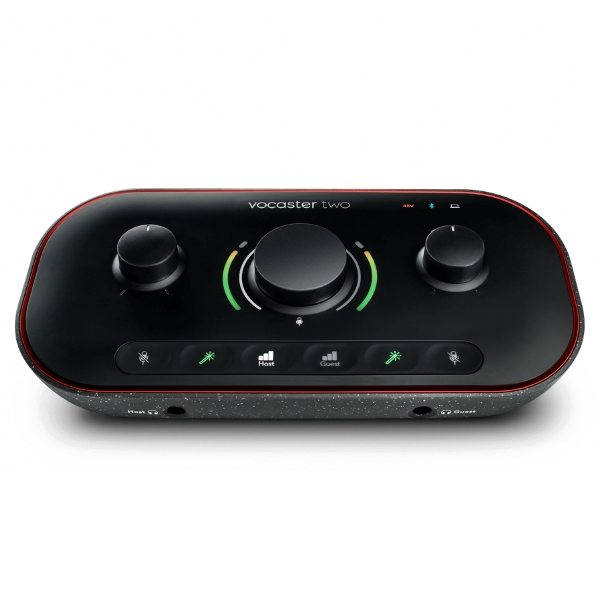
With bags of clean gain, powerful loopback software, and a host of unique, podcast-friendly features, the Focusrite Vocaster Two is our pick for a budget interface for podcasting.
Best overall
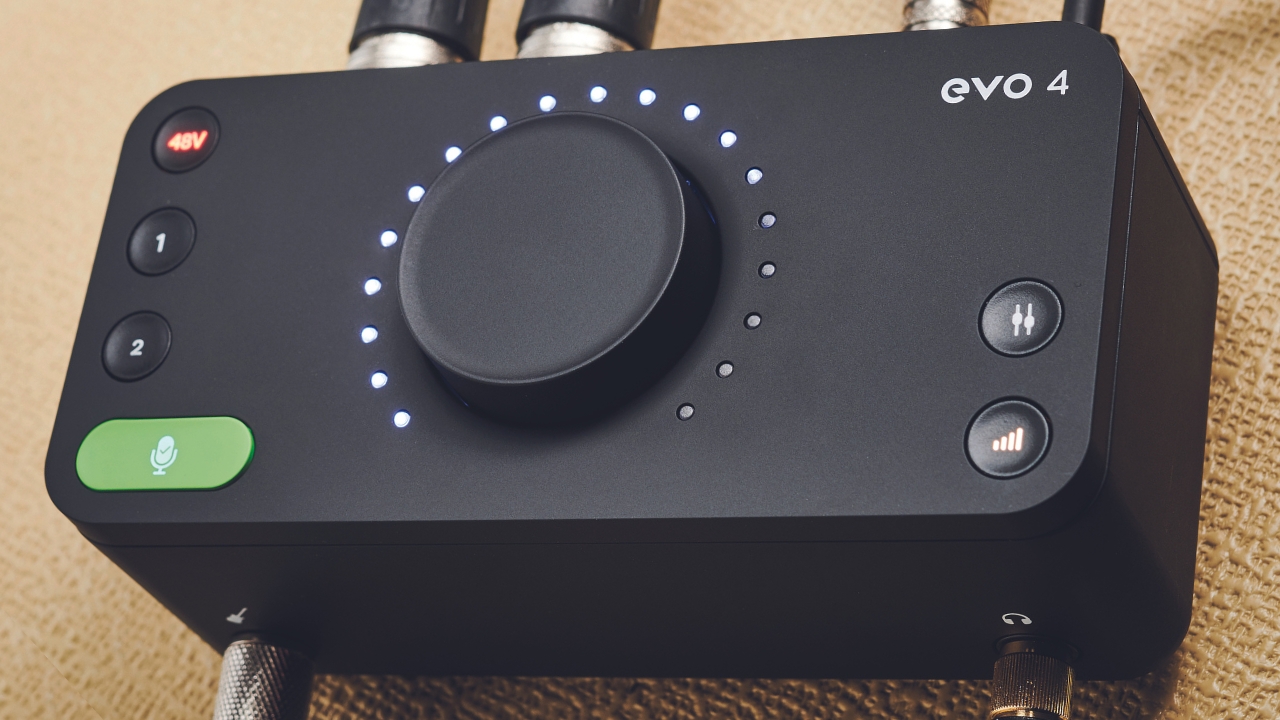
Specifications
Reasons to buy
Reasons to avoid
✅ Buy if you want the best interface under $200: Packed with features that makes it easy to use and top quality preamps, the Evo 4 is a brilliant choice for those on a budget.
❌ Avoid if you prefer controls on the front: It's quite tall, so when sitting on a desk can be a little awkward to reach over for the controls and see what you're changing.
The compact Evo range was launched at the NAMM Show in 2020 with much acclaim. You’ll find two combi mic/line inputs around the back of the EVO 4, and one instrument level input at the front for connecting guitar or bass (which then overrides the first input around the back).
Two speaker-outs complete the connections and a central main dial controls the level of that output, plus a number of other levels determined largely by which buttons on the top of the panel you press. These are 1 and 2 (for the input levels), and output (bottom right) plus a final button that means the dial adjusts the mix between the input and DAW.
Using the headphone socket means the main dial controls this level. EV. The one-dial solution is beautifully implemented and designed to help make the EVO 4 a clever, compact desktop solution that sounds great.
Read our full Audient Evo 4 review
Best budget
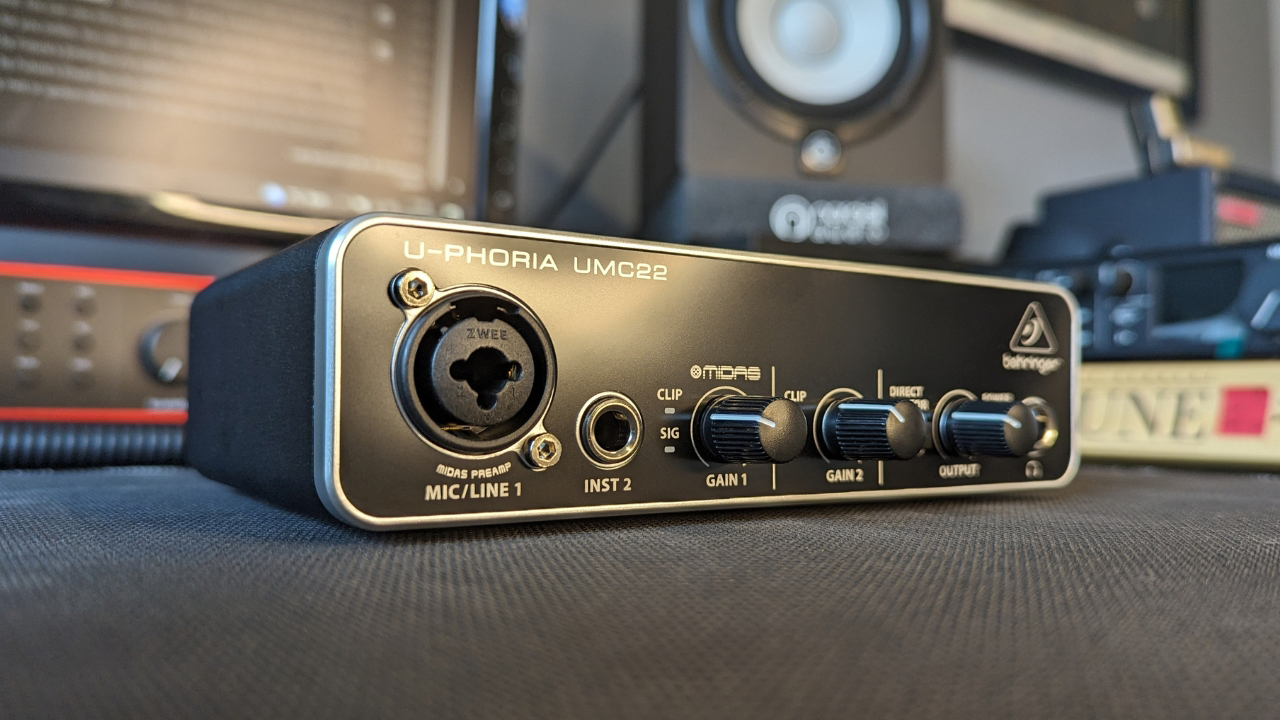
Specifications
Reasons to buy
Reasons to avoid
✅ Buy if budget is your number one concern: As one of the cheapest interfaces you can buy, the UMC22 is a brilliant option if you're on a shoestring budget.
❌ Avoid if you like dedicated software: You'll have to use a third-party driver for this interface, so you might want to avoid if you prefer manufacturer drivers and software.
The Behringer U-Phoria UMC22 is one of the cheapest audio interfaces we’ve ever come across, so if budget is your number one consideration then this is as low cost as it gets. It’s 2-in 2-out format that’s nice and compact, making it a great option for setting up a home studio on a budget.
There’s no dedicated driver for the UMC22, so you’ll need to download a third-party one if you’re using it on Windows - we like ASIO4ALL. We found it a little noisier than other audio interfaces of similar price, but it’s unlikely anyone who’s a beginner or hobbyist would notice this.
We really liked the MIDAS preamp, which delivered easily usable sounds on a variety of sources from acoustic guitars and vocals to direct in synthesizers and electric guitars. It’s perfect for demoing songs at home or putting together ideas to take to the practice room and studio and considering the price, there’s very little to complain about here.
Read our full Behringer UMC22 review
Best compact
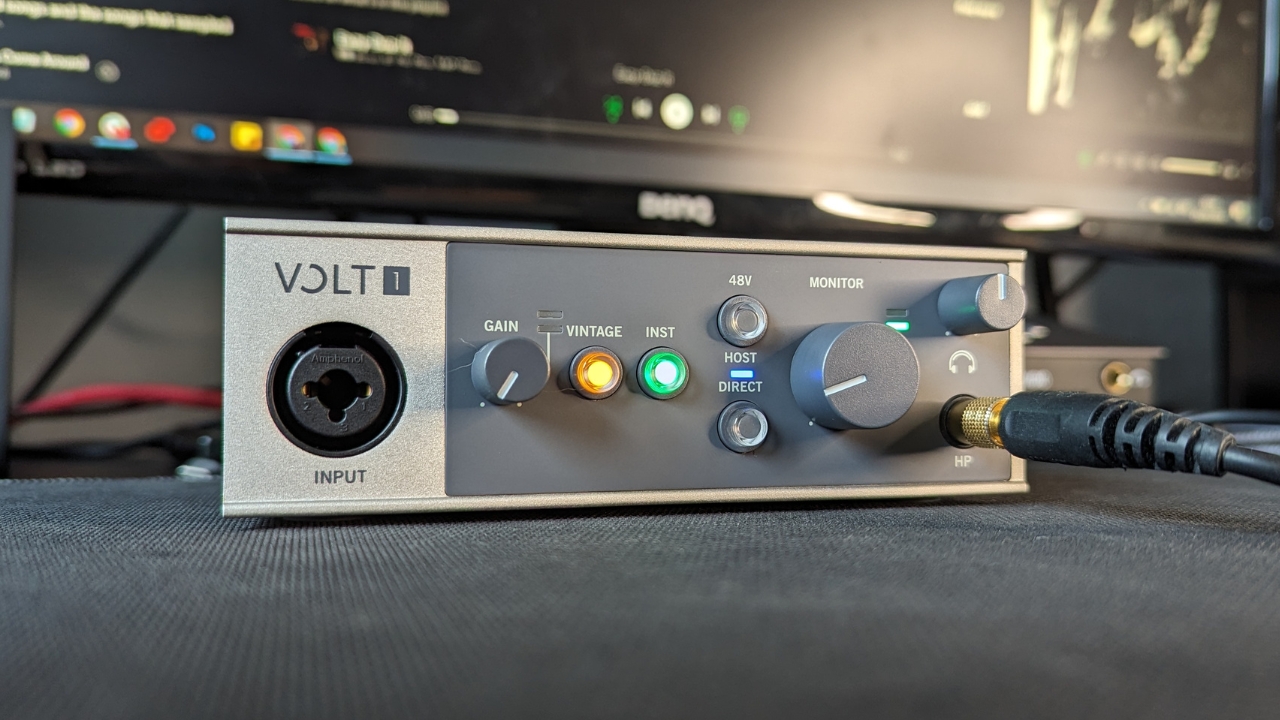
Specifications
Reasons to buy
Reasons to avoid
✅ Buy if you want a compact but great quality interface: The Volt 1 is tiny but features an ultra powerful preamp and useful tube emulation circuitry. It's robust enough for life on the road, too.
❌ Avoid if you need more inputs: With just a single input it's pretty limiting for anything other than single instruments or vocals.
Universal Audio used to focus on the high-end market with interfaces that boasted both a quality signal flow and also acted as hosts and accelerators for the company’s very well regarded plugin range. That changed with the Volt range, a set of four units that eschew the plugin hosting in favour of value and more standard features. The more expensive 176 and 276 fall just outside of our price cap but the Volt 1 and 2 offer most of what they deliver bar their extra 1176-style compression.
Both Volts 1 and 2 are plug-and-play USB-C interfaces that offer UA’s excellent preamps on their combi inputs, with one input available on the Volt 1 and two on the Volt 2. These offer a great vintage tube sound on your inputs, giving recordings a richness rarely heard in this price range.
The Volts are a radical departure for UA, offering an affordable taste of the brand’s key ingredients. They’re incompatible with plugins from the UAD store but they absolutely deserve to shake up the sub-$200/£200 interface market with a great design, a plug-and-play workflow and hard-to-beat audio conversion.
Read our full Universal Audio Volt 1 review
Best for guitar
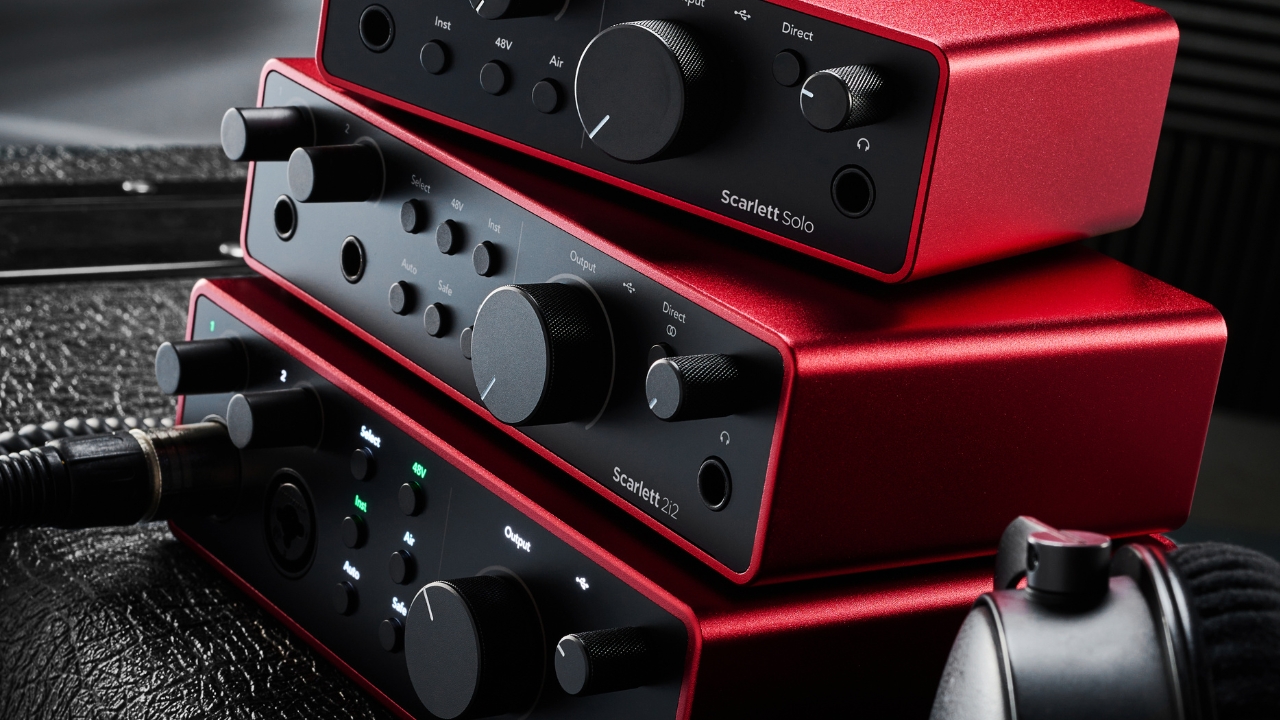
Specifications
Reasons to buy
Reasons to avoid
✅ Buy if you want a great audio interface for guitars: It'll work well for anything, but we love the Scarlett 2i2 4th Gen for it instrument inputs on the front on excellent feature set.
❌ Avoid if you don't like software: Some features are only available via the included software, so one to avoid if you prefer pressing buttons.
Focusrite audio interfaces have traditionally combined excellent sonics and audio flexibility at affordable price points, and the 4th generation units keep up the good work. Upgraded with improved preamps that deliver a huge 69dB of gain, balanced connectivity throughout, and the inclusion of Focusrite’s ISA transformer preamp emulation option, the 2i2 is one of the most fully featured audio interfaces you can buy today.
On the bus-powered Scarlett 2i2, you get two instrument inputs on the front, while your XLR connectivity is on the back of the unit. Two line outputs complete the lineup, and the 2i2 supports Focusrite’s Control application, which means that a number of settings can only be made in the software.
In practice the sonics are neutral and the drivers reliable. The Air option tilts the frequency response towards high frequencies, and this can be great for taming undesirable proximity or adding high-frequency lift. It works particularly well on vocals. With a decent software bundle included, this is a solid upgrade and a great, affordable audio interface.
Read our full Focusrite Scarlett 2i2 4th Gen review
Best for streaming
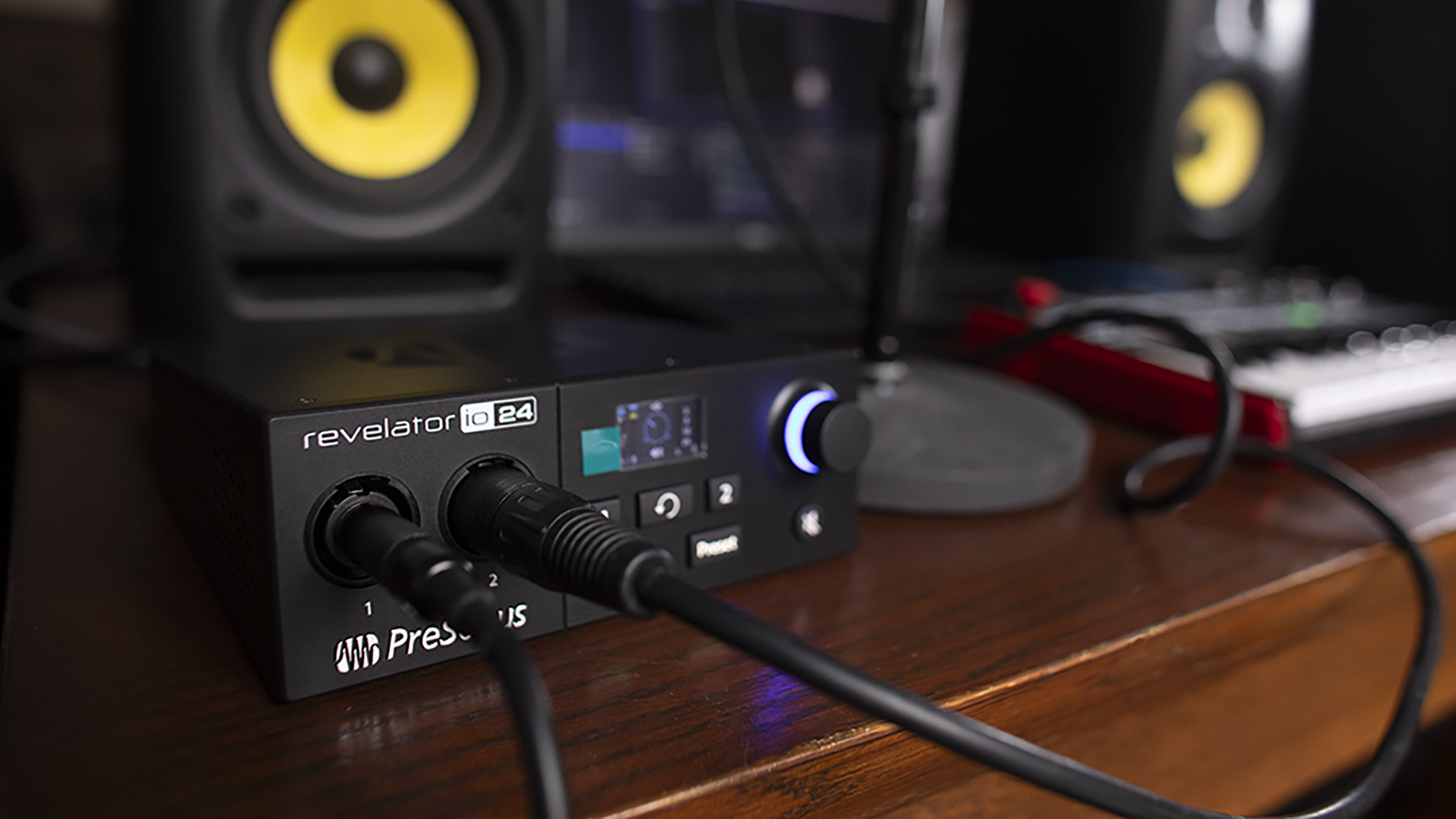
Specifications
Reasons to buy
Reasons to avoid
✅ Buy if you want a cheap interface for streaming: With a powerful Universal Control software, the Revelator io24 is a fantastic choice for the creative who wants to livestream.
❌ Avoid if you like buttons: Much of the controls here are handled via software, so give it a miss if you prefer your interfaces with physical buttons.
Streaming is absolutely massive these days, thanks to the lockdown years forcing creatives to find new ways to express themselves that don't involved standing in front of thousands of people. Despite lockdown ending and COVID being a mere memory now, streaming persists in being popular and for our money, the PreSonus Prevelator io24 is a brilliant option for those on a budget.
We particularly like the included Universal Control software, which enables the interface loopback function. This provides great flexibility for routing audio between different applications without requiring extra cables, making it ideal for streamers and musicians alike. Build quality is solid, and the MIDI connectivity to the back of the unit is a great touch.
There's also a selection of handy EQ and DSP controls that can add some pizazz to your livestreaming, alongside several presets for vocals and instruments, and 8 slots to save your own presets. It's a complete package for very little money, and undoubtedly one of the best audio interfaces for streaming available today.
Read our full PreSonus Revelator io24 review
Best for podcast
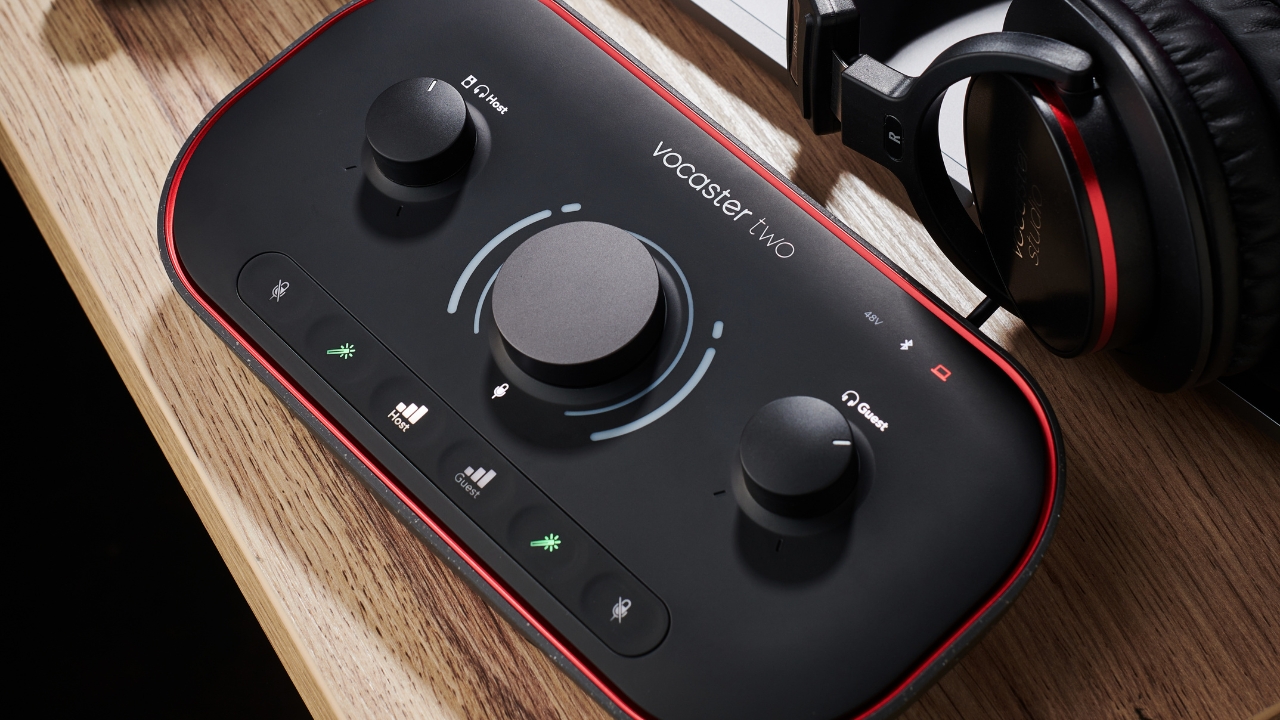
Specifications
Reasons to buy
Reasons to avoid
✅ Buy if you want an all-in-one podcasting interface: With its podcast friendly features like phone input and camera output, this is a great choice for creating podcasts.
❌ Avoid if you need combi-inputs: There are only XLR inputs on the Vocaster, so avoid if you need to use 1/4-inch cabling.
Podcasting is a big thing nowadays, with millions of episodes littering Spotify, Apple, YouTube, and anywhere else you can get recorded audio or video. Creating a podcast can get pretty technical, but if you’re the sort who wants simplicity, the Focusrite Vocaster Two will do all the heavy lifting for you.
The auto-gain feature is super useful, allowing you to automatically set the levels of yourself or your podcast guest without having to ride faders or edit in post. A phone input is super handy too, allowing you to interview guests over your smartphone using the dedicated input and there’s even a camera output which is great if you’re uploading your podcast to YouTube.
There’s bags of clean gain on the input, so you can use your famously quiet dynamic mics the Shure SM7B without fear of your recording being too quiet. The Vocaster Hub software allows you to view your levels in more detail and provides a super useful loopback feature for introducing computer audio into your podcast.
Read our full Focusrite Vocaster Two review
More options...

Specifications
Reasons to buy
Reasons to avoid
✅ Buy if you want a great interface to take on the road: The USB hub connection means you can run your MIDI keyboard or other USB peripherals straight from the interface, making the MiniFuse 2 great as part of a travel rig.
❌ Avoid if you dislike stiff knobs: It's a small thing, but we found the knobs on our model a little too stiff for our tastes.
MiniFuse is French company Arturia’s compact interface range and we have the mid-sized MiniFuse 2 on test here. It has its own Control Centre software and also has one of the best bundles of software of all the interfaces here. You get Arturia titles (naturally) alongside Ableton Live Lite and Auto-Tune Unlimited.
The MiniFuse 2 sounds pretty good, with nice clean main outputs and plenty of volume from the headphones. The instrument inputs also sound great and it’s good to see two identical mic/line/instrument inputs. But it’s the overall functionality that wins through, with plenty of backlit buttons and illuminated controls so it's obvious what’s going on.
MiniFuse 2 is a feature-rich device with extras that you don’t always get at this price. Factor in the impressive software bundle, generous five-year warranty and a choice of colours and you have a pretty decent package for the money.
Read our full Arturia MiniFuse 2 review
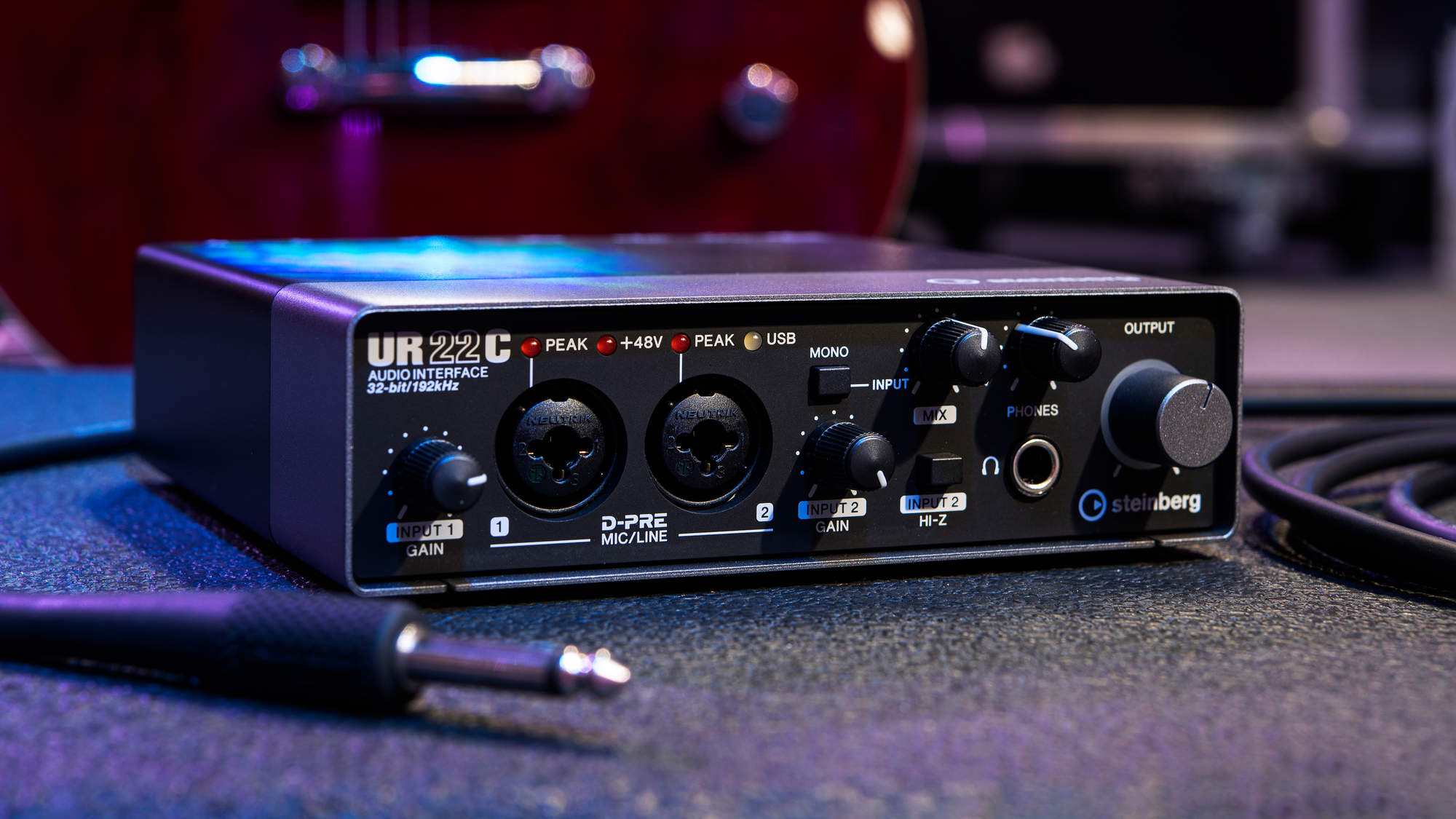
Specifications
Reasons to buy
Reasons to avoid
✅ Buy if you want a sturdily built audio interface: The UR22C is an incredibly rugged bit of a kit, making it great if you need an interface that can travel on the road.
❌ Avoid if you use iOS: This interface needs an additional power supply if you want to use it with iOS.
Steinberg pimped-up its UR range of audio interfaces, introducing USB 3.0 models for PC, Mac and iOS. The UR22C, on test here, is the most affordable. It offers USB Type-C connectivity (or USB 3.1 Gen 1 SuperSpeed, to give it its official title) and operates at 32-bit/192kHz audio resolution.
There’s MIDI I/O, too, as well as DSP that provides zero-latency effects that can be used when monitoring. These can be accessed via the dspMixFx mixer. Unsurprisingly, the UR22C is a 2-in/2-out audio interface. You get a couple of balanced Neutrik combo inputs, each of which sports a Yamaha D-PRE mic preamp, and two balanced line outputs.
With its rugged metal casing, the UR22C is a reliable audio interface if you want something that can be slung in a backpack without fear. It also includes a good bundle of software called Steinberg Plus which includes apps, sounds and loops.
Read our full Steinberg UR22C review
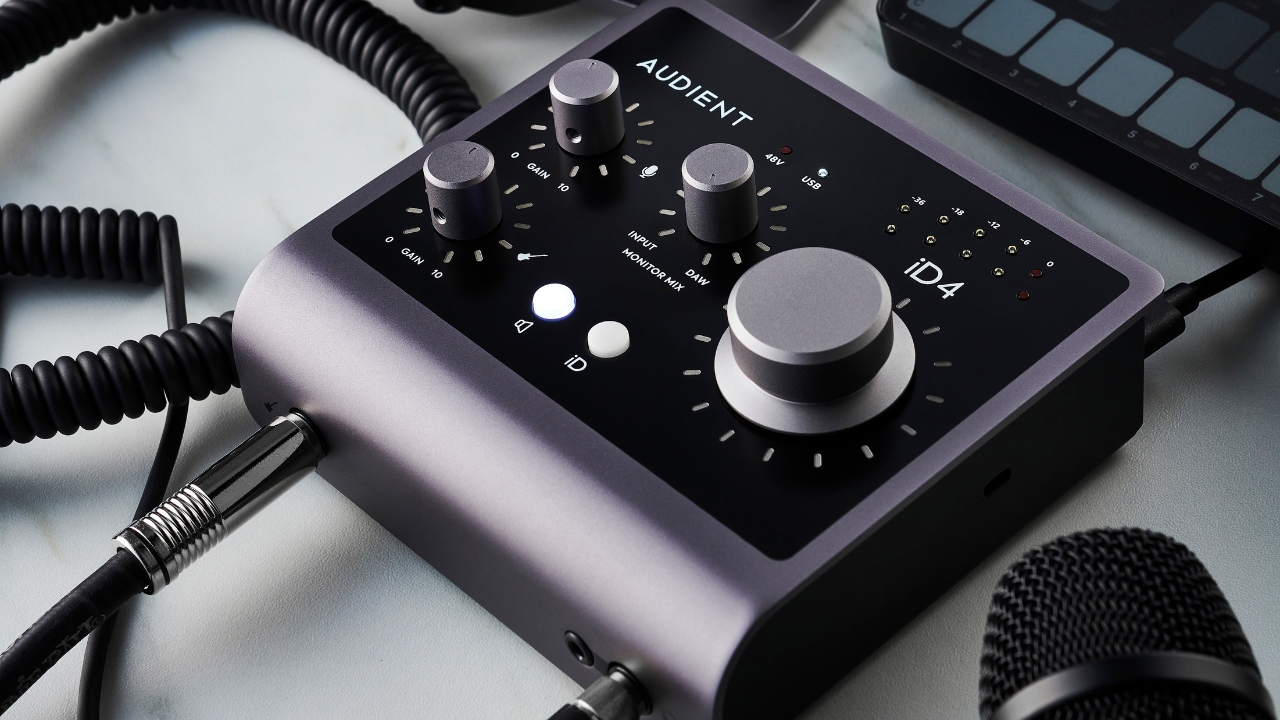
Specifications
Reasons to buy
Reasons to avoid
✅ Buy if you want a great quality preamp for less: Featuring the same preamps as their much more expensive models, the iD4 is a great interface if you value preamps over all.
❌ Avoid if you need MIDI: There's no MIDI functionality so if you need that for your workflow then you'll want to look elsewhere.
The iD4 MkII is, on the face of it, a simple two-input/two-output, offering a mic preamp complete with phantom power for using condenser mics. It's the same preamps that feature on their interfaces costing in the thousands of dollars, so at this price it's an absolute steal.
There’s also an instrument level DI for plugging in your guitar or bass, plus a smart scroll wheel enabling you to tweak settings in your software. On top of this, there’s a main output for your speakers and dual headphone outputs.
The whole thing is powered via USB-C and, with Apple’s camera connection kit, it can also work with an iPhone/iPad. However, for us the studio devilry is in the detail: Audient has really thought about everything with value and usability in mind, making what is a budget solution feel anything but inexpensive in use. The Audient iD4 MkII is one of the best USB audio interface we’ve tried and also features a very decent software bundle.
Read our full Audient iD4 MKII review

Specifications
Reasons to buy
Reasons to avoid
✅ Buy if you want an excellent software bundle: Native Instruments provide some of the best software in the business, making this a great choice if you're starting from scratch.
❌ Avoid if you value looks: Sometimes you want an interface that's the centre piece of your studio, and for us, the looks on the Komplete Audio 2 are a little plain.
Komplete Audio 2 has a two-input, two-output design with two identical mic/line/instrument inputs. Connections are on space-saving combi XLRs with individual selector switches to select between line and instrument. 48V phantom power, meanwhile, is engaged globally via a single switch.
In addition to the inputs, the front panel includes a hardware monitoring balance knob (Input/Host) and headphone output with independent control.
The main output level is controlled from a large output level knob on the top panel. Here you’ll also find the input meters, alongside phantom and USB indicators. Round the back you’ve got the USB-B connector, a pair of balanced outputs on TRS 1/4-inch jacks and a Kensington Security slot.
Komplete Audio 2 makes our best audio interface under $200/£200 list because in action its performance is as slick as its looks. Though the features are basic, it does its job admirably. And when you consider the excellent software bundle, it's great value.
Read our full Native Instruments Komplete Audio 2 review
Buying advice
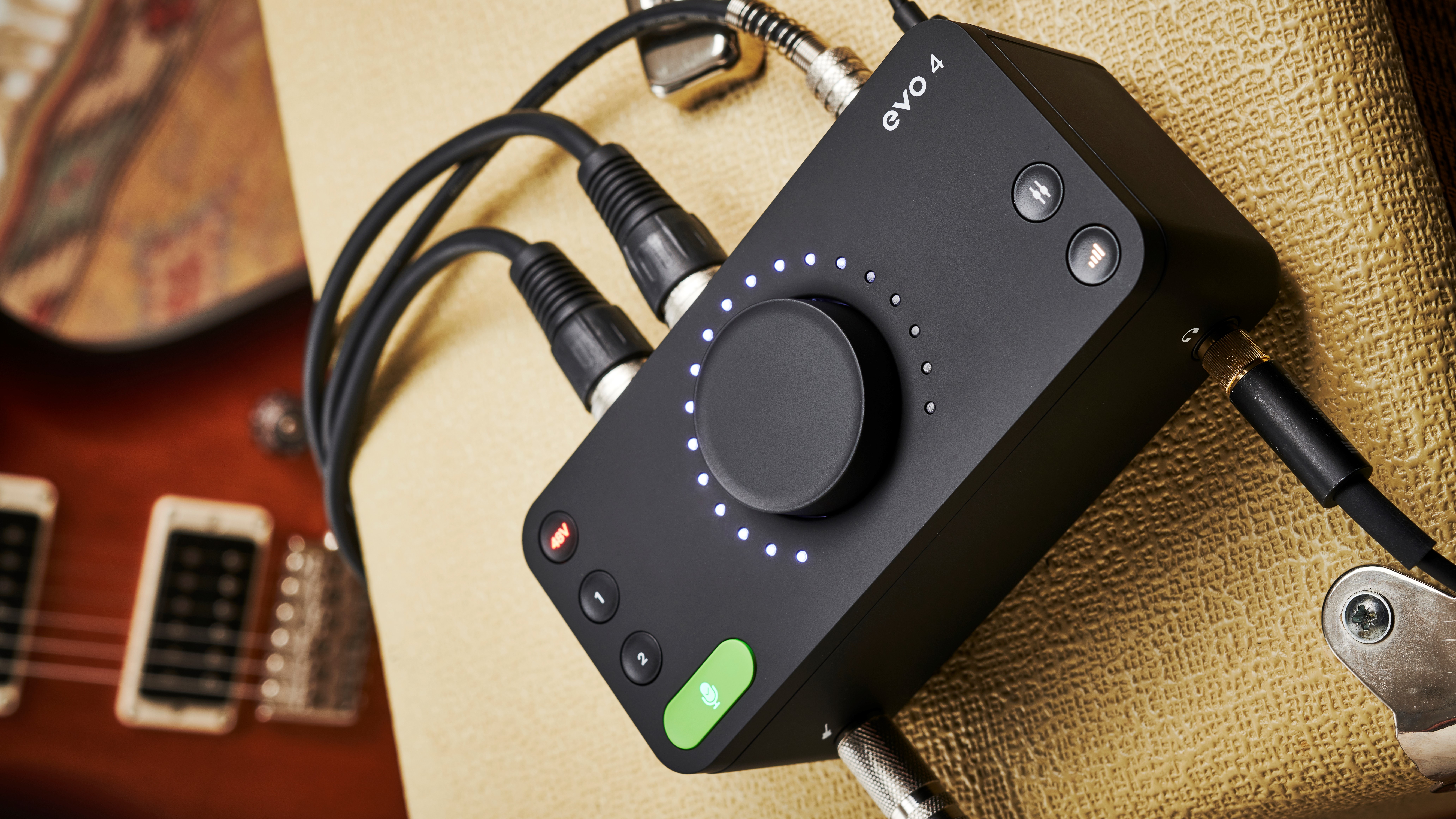
How much should I pay for an audio interface?
The best audio interface for you will at least partly come down to price. This buyers guide is for those with a budget of around £200/$200/€200 and, as you can see, you get some great interfaces for that outlay. If you have less to spend, we also recommend reading our guide focused specifically on the best budget audio interfaces.
Interfaces are serious pieces of kit that should keep the audio signal quality high throughout the recording process, but you needn't pay serious money for them. If you are an in-the-box producer, you might only need one input at any one time to record, plus a couple of outputs to your speakers. Even a singer/guitarist can get away with just two inputs, and a decent 1 or 2-input/2-output audio interface only costs from around £50/$50/€50 up to £200/$200/€200. Add more inputs and better quality preamps on these – which will give you a better quality audio recording – and you could pay anything from a couple of hundred to £700/$700/€700 for a medium-sized interface capable of recording all of the outputs from a band, for example.
Pro grade interfaces with fast connectivity, the ability to power software (see Universal Audio) and digital inputs and outputs can tip into four figures – sometimes up to two grand – but you might not need any or all of the extras they offer. Many interfaces support an array of digital ins and outs like ADAT and S/PDIF, for example, two digital standards you only need to take into consideration if you have other audio gear with these inputs and outputs included.
What is the best audio interface brand?
If you're going for an interface you can't go wrong with brands like Focusrite, Audient, Universal Audio, PreSonus, Arturia, Behringer, Native Instruments, and Steinberg. That said, there's no 'best' brand as such, but rather there are many high quality manufacturers of audio interfaces. The companies represented in this guide all have stellar reputations for providing musicians with quality audio interfaces and audio gear in general.
Do better audio interfaces improve sound quality?
If you spend more money on audio interface you will get better audio quality, but the improvement will only be very slight. Generally when you spend more on an audio interface you'll be getting more inputs and features, rather than any drastic improvement in quality. Most modern audio interfaces are very evenly matched when it comes to sound quality, with the real differentiating factor being the microphone or quality of the signal coming in.
How we test
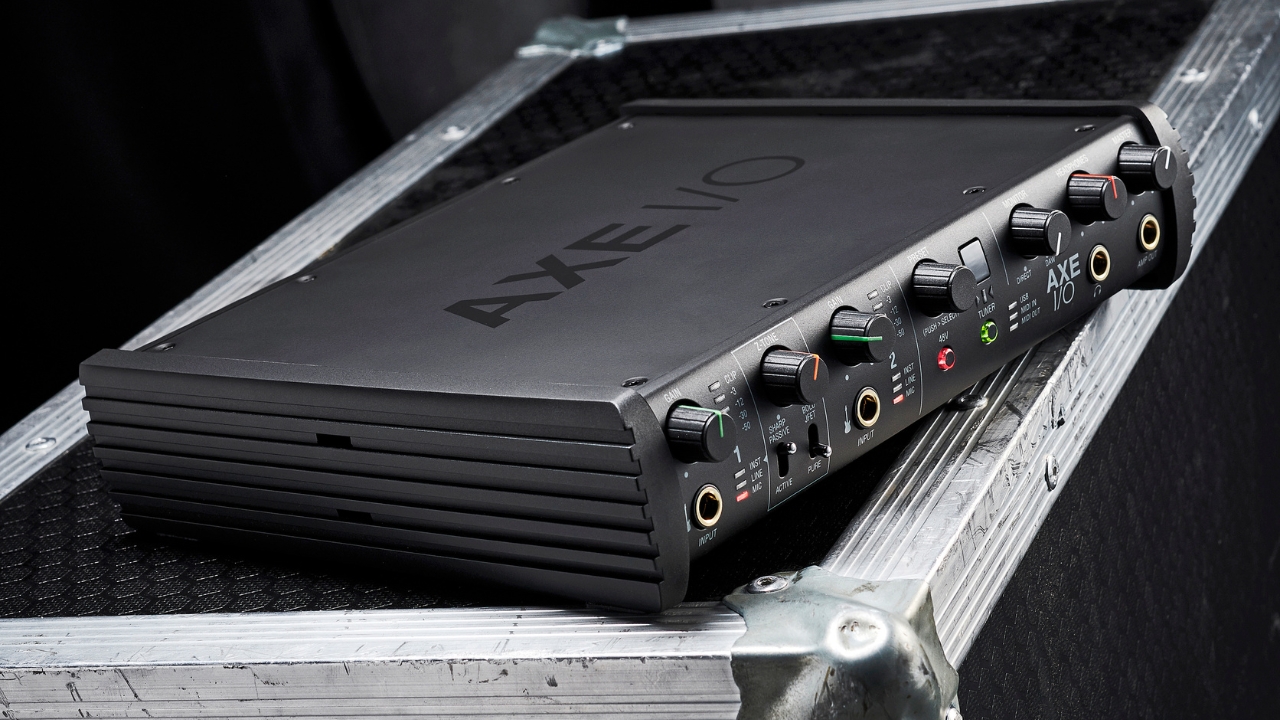
Audio interfaces are essentially devices designed to record audio into your computer DAW and play it back out. The key factors when testing them are how easily they do this and the level of audio quality they are capable of delivering while doing so.
Many audio interfaces are 'plug ’n’ play' so will automatically be picked up by your computer and DAW when you first connect them, so setting up should be easy. Your DAW should then list all of the audio interface's physical inputs and outputs, often as selectable options on its input and output channels.
Sound quality is determined by an interface's A-D/D-A converters, sample rates, and frequencies quoted in their specs (24-bit/96kHz, for example).
We test for sound quality by recording several sources via the interface's mic and line inputs, and judging the playback quality against that expected from the specs. We also compare the same material recorded with our reference audio interfaces that we use on a daily basis.
Some audio interfaces come with extra bespoke software that lets you select input and output configurations and might also add other routing options or even effects. How easy this extra software is to use is also an important factor.
We also consider latency when testing interfaces. This is the time it takes for audio to go into and out of your computer DAW via the audio interface. If this is slow, the latency figure is high so can result in a delay between you playing a note and then hearing it. This is obviously not practical if you are recording some playing and attempting to be in time with your DAW playback.
Read more about how we test audio interfaces at MusicRadar.
Related buying guides
MusicRadar's got your back
- Need to save some cash? These are the best budget studio monitors
- Elevate your content with the best audio interfaces for streaming
- And these are the best budget studio headphones
- Take a look at the best budget USB microphones
- You should grab one of the best budget laptops for music production
- Check out the best budget PCs for music production
Get the MusicRadar Newsletter
Want all the hottest music and gear news, reviews, deals, features and more, direct to your inbox? Sign up here.
Andy has been writing about music production and technology for 30 years having started out on Music Technology magazine back in 1992. He has edited the magazines Future Music, Keyboard Review, MusicTech and Computer Music, which he helped launch back in 1998. He owns way too many synthesizers.
- Matt McCrackenJunior Deals Writer
“The included sample content is not only unique but sonically amazing, as it always was”: Spitfire Audio BBC Radiophonic Workshop review
“We were able to fire up a bass sound that was indistinguishable from the flavour of New Order’s Blue Monday in seconds”: EastWest Sounds Iconic review
